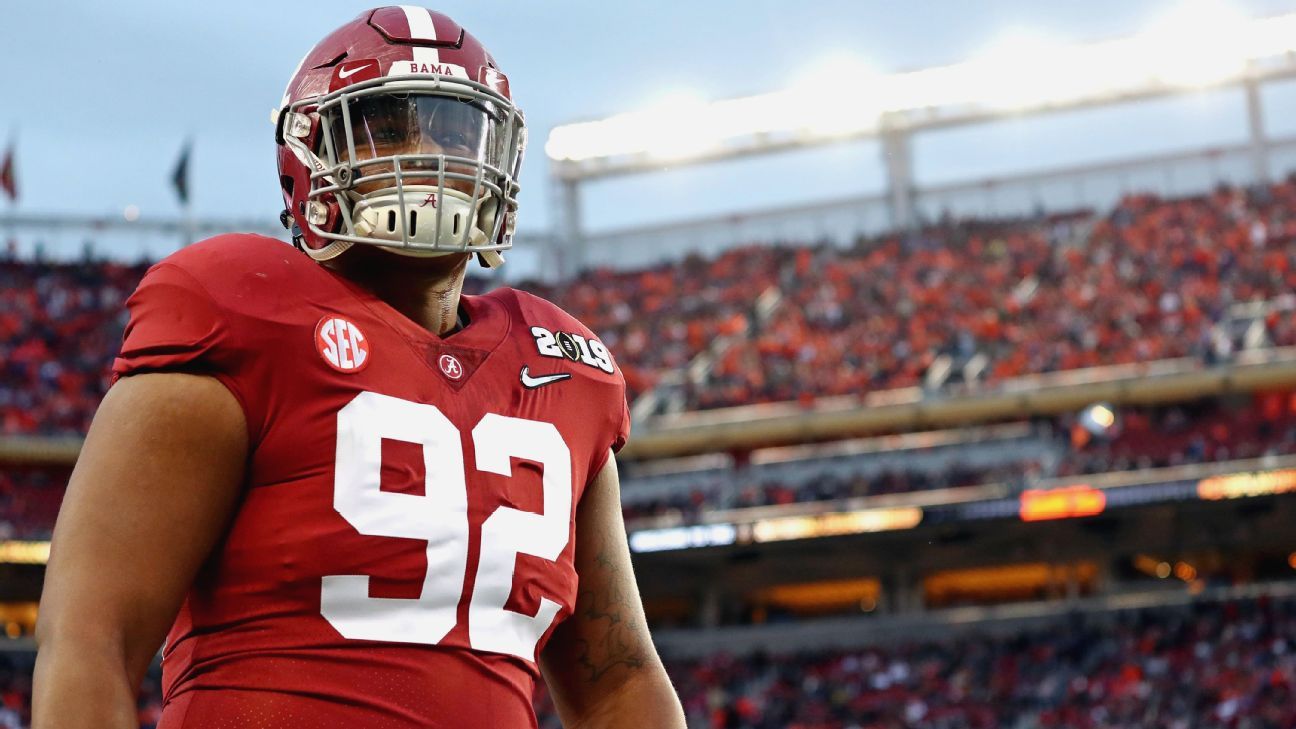Some really good players could come to those who wait in the 2019 NFL draft.
The reward for a little patience could be epic, at least for those who don’t need to jockey to get in position for a quarterback or wide receiver.
That’s because this draft is deep in defensive talent. Oakland Raiders general manager Mike Mayock went as far as to say it is the best collection of defensive tackles and edge rushers in a decade. So, with the expected early run on quarterbacks, some of those blue-chip defensive players will be pushed down the board.
In that light, and after watching a pile of game video to go with hours’ worth of interviews with coaches, personnel executives and scouts, here is one man’s top 100 for the 2019 NFL draft.
This isn’t a mock draft, just the top 100 players ranked, regardless of position. The quarterbacks will certainly be selected well before where they have been slotted, because there are always two draft boards — the quarterback board and the board for everybody else.
And as always, if you disagree with the rankings, rest assured many in the league whom I have long respected have already objected.
Note: Best verified or electronically timed 40-yard dash time in parentheses — PD means pro day.
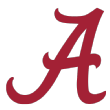 1. Quinnen Williams, DT, Alabama, 6-foot-3, 303 pounds (4.83)
1. Quinnen Williams, DT, Alabama, 6-foot-3, 303 pounds (4.83)
The fact Williams essentially started for one season shows the ridiculous amount of defensive line talent at Alabama. Williams is a complete prospect with power, agility, technique and an innate ability to beat blocks — 18.5 tackles for loss in 2018 and 44 solo tackles.
 2. Nick Bosa, DE, Ohio State, 6-3¾, 266 (4.79)
2. Nick Bosa, DE, Ohio State, 6-3¾, 266 (4.79)
Bosa played three games in 2018 because of a serious core muscle injury. But in those three games he made 14 tackles and had six tackles for loss, four sacks and a forced fumble. Critics say he might not be as good an overall athlete as his brother Joey and his muscular frame might be prone to injuries if he doesn’t consistently maintain his flexibility. He has proficient hand work in the pass rush and understands how to get to the quarterback.
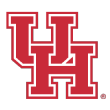 3. Ed Oliver, DT/DE, Houston, 6-1⅞, 287 (4.73 PD)
3. Ed Oliver, DT/DE, Houston, 6-1⅞, 287 (4.73 PD)
Oliver is a fast-twitch player who will need the team who selects him to use him where he is at his best — as a one-gap player with rare abilities. He finished his three-year career with the Cougars with 54 tackles for loss, 13.5 sacks, six forced fumbles and 14 pass knockdowns.
 4. Christian Wilkins, DT, Clemson, 6-3¼, 315 (5.04)
4. Christian Wilkins, DT, Clemson, 6-3¼, 315 (5.04)
Wilkins needs an NFL strength program, particularly to help him beat the inevitable double-teams. But he was a coveted team leader and multiyear starter in one of college football’s elite programs. A scholar-athlete who played 2,441 snaps in 59 games with 45 starts, there are times on the game video when he moves like an inside linebacker.
 5. Jonah Williams, OT, Alabama, 6-4½, 302 (5.09)
5. Jonah Williams, OT, Alabama, 6-4½, 302 (5.09)
C’mon, am I really saying Williams is the top-ranked offensive player on this draft board? Yes. In the deepest defensive line draft in years, including SEC edge rushers like Josh Allen and Montez Sweat, Williams didn’t surrender a sack in 2018. Alabama coaches told scouts he missed three assignments in 920 snaps at left tackle all season.
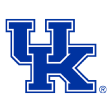 6. Josh Allen, OLB, Kentucky, 6-4⅞, 262 (4.63)
6. Josh Allen, OLB, Kentucky, 6-4⅞, 262 (4.63)
Allen has what scouts call “flexibility at the top of the rush” — the ability to get the corner against more powerful players by winning with leverage. He will have to adjust, and quickly, against stronger tackles, but he can play in coverage. A team captain, Allen didn’t miss a game in four years and finished with 31.5 career sacks.
 7. Josh Jacobs, RB, Alabama, 5-10, 220 (4.55 PD)
7. Josh Jacobs, RB, Alabama, 5-10, 220 (4.55 PD)
Yes, running backs aren’t supposed to be good value in the first round. But he is a pro football player with vision, power and receiving skills. He can also make tacklers miss.
 8. T.J. Hockenson, TE, Iowa, 6-4¾, 251 (4.70)
8. T.J. Hockenson, TE, Iowa, 6-4¾, 251 (4.70)
Another value call for some teams this high on the board. But Hockenson blocks — the video consistently shows defenders blocked to the ground — runs precise routes and has wide receiver hands. He averaged 14.8 yards per catch but does block with too narrow a base at times.
 9. Devin White, LB, LSU, 6-0, 237 (4.42)
9. Devin White, LB, LSU, 6-0, 237 (4.42)
White’s not as refined a player as Roquan Smith, the No. 8 pick in the 2018 draft. A high-energy player, he can overpursue and miss reads. White was a team captain who finished with 286 career tackles. He’s a rare athlete who scored 81 touchdowns as a high school running back.
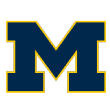 10. Devin Bush, LB, Michigan, 5-11, 234 (4.43)
10. Devin Bush, LB, Michigan, 5-11, 234 (4.43)
Bush is an athletic, sub-240 pound linebacker who has elite closing speed and toughness. A scheme fit for some, he diagnoses quickly and finds the ball — 194 career tackles including 19.5 for loss and 10 sacks.
 11. Andre Dillard, OT, Washington State, 6-5, 315 (4.96)
11. Andre Dillard, OT, Washington State, 6-5, 315 (4.96)
Dillard has a coveted skill set in pass protection with his footwork and quickness. Although he’s a three-year starter, Williams has faced better competition. The Cougars’ quirky scheme puts Dillard behind in the run game, but his game video shows he can get his hands in the right spot and play with composure and balance.
 12. Rashan Gary, DE, Michigan, 6-4⅜, 277 (4.58)
12. Rashan Gary, DE, Michigan, 6-4⅜, 277 (4.58)
He might be the biggest “what-if” non-quarterback on the board, but his physical abilities and effort are too good to ignore. Yes, he had 10.5 career sacks for the Wolverines and missed time in 2018 because of a shoulder injury, but with the right defensive line coach there is football gold to mine.
 13. Dwayne Haskins, QB, Ohio State, 6-3⅜, 231 (5.04)
13. Dwayne Haskins, QB, Ohio State, 6-3⅜, 231 (5.04)
Haskins is the most well-rounded quarterback in the draft, a fierce competitor with the confidence and presence in the pocket to make plays all over the field. If you want the mobility-first factor, he isn’t your guy. He moves and slides to make throws. Haskins set six Ohio State career passing records as well as 17 single-season records with 4,831 passing yards and 50 passing TDs in 2018.
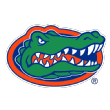 14. Jawaan Taylor, OT, Florida, 6-5, 312 (DNR)
14. Jawaan Taylor, OT, Florida, 6-5, 312 (DNR)
Taylor didn’t do a full workout at the combine because of a hamstring injury, but did blocking drills at the Gators’ pro day. Taylor needs plenty of technique work, but this is a power player in the run game who has a bright future, with the right coach, as a right tackle or a guard.
 15. Byron Murphy, CB, Washington, 5-10¾, 190 (4.55)
15. Byron Murphy, CB, Washington, 5-10¾, 190 (4.55)
Murphy doesn’t have the most extensive body of work — 20 games with the Huskies — and his 40 time will make some pause. But he plays with agility, balance and toughness along with an ability to recognize routes.
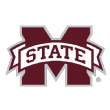 16. Montez Sweat, DE/OLB, Mississippi State, 6-5¾, 260 (4.41)
16. Montez Sweat, DE/OLB, Mississippi State, 6-5¾, 260 (4.41)
A phenomenal athlete whose combine workout could only be described as ridiculous. Sweat was timed faster than 31 of the wide receivers who ran the 40-yard dash in Indy. He will have a learning curve with blockers as Sweat’s lateral quickness doesn’t match his straight-line speed.
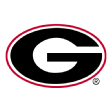 17. Deandre Baker, CB, Georgia, 5-11, 193 (4.53)
17. Deandre Baker, CB, Georgia, 5-11, 193 (4.53)
This is higher than some would rate him, but his ability to diagnose routes and desire to compete on every play cannot be understated. Baker simply doesn’t surrender scoring plays. He didn’t give up any touchdowns in coverage the past two seasons.
 18. Noah Fant, TE, Iowa, 6-4⅛, 249 (4.50)
18. Noah Fant, TE, Iowa, 6-4⅛, 249 (4.50)
Fant and Hockenson could become the first pair of tight ends from the same school selected in the first round. Fant is the impact receiver teams want at tight end. He needs plenty of work as a blocker but will be an immediate contributor as a pass-catcher.
 19. Clelin Ferrell, DE/OLB, Clemson, 6-4⅜, 264 (DNR)
19. Clelin Ferrell, DE/OLB, Clemson, 6-4⅜, 264 (DNR)
Ferrell had a toe injury at Clemson’s pro day and did not run a 40 at the combine. He isn’t a raw athlete, like some edge rushers in this draft, but Ferrell knows how to get to the quarterback — 21 sacks in the past two seasons combined — with a diverse set of moves, quality hand work and toughness.
 20. Kyler Murray, QB, Oklahoma, 5-10⅛, 207 (DNR)
20. Kyler Murray, QB, Oklahoma, 5-10⅛, 207 (DNR)
Murray doesn’t need to run a 40-yard dash to show scouts he’s fast. He is a breathtaking athlete. Murray has a quality arm, good work in big moments and plays with composure. But he might not get the patience needed from the team that drafts him. He needs time to diagnose coverages and move to create throwing lanes.
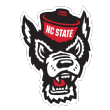 21. Garrett Bradbury, C, North Carolina State, 6-2⅞, 306 (4.92)
21. Garrett Bradbury, C, North Carolina State, 6-2⅞, 306 (4.92)
Bradbury’s taken the road less traveled to be the best center in the draft — from tight end to defensive end to guard to center. He plays with quickness and balance and can see where the trouble is coming from in the pass rush.
 22. Rock Ya-Sin, CB, Temple, 5-11¾, 192 (4.51)
22. Rock Ya-Sin, CB, Temple, 5-11¾, 192 (4.51)
With one year of major college football on his résumé, Ya-Sin has the size, speed, quickness and ability to play corner in the NFL. He’s rough around the edges in some of his techniques, but he gets to the ball and didn’t surrender a reception over 25 yards this past season.
 23. Johnathan Abram, S, Mississippi State, 5-11⅜, 205 (4.44)
23. Johnathan Abram, S, Mississippi State, 5-11⅜, 205 (4.44)
Abram, a former prep quarterback, might be one of the most physical defensive players on the board. Because he’s not a coverage-first safety, he might drop. But he’s exactly the kind of nickel safety/weak-side linebacker some teams covet. And when he gets to the ball carrier, he closes the deal (99 tackles in 2018).
 24. Dexter Lawrence, DT, Clemson, 6-4½, 342 (5.05)
24. Dexter Lawrence, DT, Clemson, 6-4½, 342 (5.05)
Lawrence had to answer for a failed test for performance-enhancing drugs that ended his 2018 season and had foot surgery in 2017 — two items that will affect his status. But he has the agility of a far smaller player — he blocked a kick and had a rushing TD last season — and projects the ability to play in a variety of schemes.
 25. Cody Ford, OT, Oklahoma, 6-3¾, 329 (5.21)
25. Cody Ford, OT, Oklahoma, 6-3¾, 329 (5.21)
Ford played left guard, right tackle and left tackle in 29 games for the Sooners. He missed most of the 2016 season because of a fractured fibula and needs some refinement in his skills, especially at tackle. Ford shows power and quickness, and watching him move on screen passes shows his potential.
 26. Greedy Williams, CB, LSU, 6-1⅞, 185 (4.37)
26. Greedy Williams, CB, LSU, 6-1⅞, 185 (4.37)
Williams has the profile defensive backs coaches love — tall with 74½-inch armspan and elite speed. He’s rarely out of position, especially in man-to-man. But even he admits his tackling needs work. A gifted player, Williams simply hasn’t played with the consistency expected.
 27. Irv Smith Jr., TE, Alabama, 6-2⅜, 242 (4.63)
27. Irv Smith Jr., TE, Alabama, 6-2⅜, 242 (4.63)
Crimson Tide tight ends don’t catch a ton of passes. Smith had 58 receptions in 38 career games, 44 of those this past season — so he is a work in progress. And those willing to live with the growing pains as a blocker will get a player who can immediately win on seam routes and get himself open down field.
 28. Taylor Rapp, S, Washington, 5-11¾, 208 (4.74 PD)
28. Taylor Rapp, S, Washington, 5-11¾, 208 (4.74 PD)
Others have better measurables, but Rapp a ballplayer. A groin injury late in the season might be the root of his pro day 40 time. He’s smart, plays with elite effort, is tough against the run and ran with players in coverage who timed faster than he did. Rapp finished his career with 171 tackles, 10 tackles for loss, seven sacks and seven interceptions.
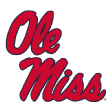 29. A.J. Brown, WR, Mississippi, 6-0½, 226 (4.49)
29. A.J. Brown, WR, Mississippi, 6-0½, 226 (4.49)
More than one scout has told me I have the wrong Ole Miss receiver in the first round. Brown might be one of the most undervalued players on the board. He will be an immediate contributor with his route-running, especially out of the slot, and aggressiveness to the ball.
 30. Drew Lock, QB, Missouri, 6-3¾, 228 (4.69)
30. Drew Lock, QB, Missouri, 6-3¾, 228 (4.69)
At some point making it behind center — no matter the athleticism, arm strength or swagger — comes down to accuracy on contested throws in pressure situations. Lock has the tools, but his accuracy will have to improve in contested situations — a lot — for him to develop.
 31. D.K. Metcalf, WR, Mississippi, 6-3⅜, 228 (4.33)
31. D.K. Metcalf, WR, Mississippi, 6-3⅜, 228 (4.33)
Metcalf is a physically imposing player who can run away from overwhelmed defenders, averaging 21.9 yards per catch last season. But he has had neck and foot injuries in his career. It’s also difficult to watch his game video without wondering why he averaged only 3.2 receptions per game over his career.
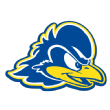 32. Nasir Adderley, S, Delaware, 5-11¾, 206 (4.53 PD)
32. Nasir Adderley, S, Delaware, 5-11¾, 206 (4.53 PD)
Adderley suffered a hamstring injury during his pro day but is an explosive player (39-inch vertical jump). He played cornerback early in his career and was a four-year starter with the Blue Hens. Had 87 and 78 tackles in the last two seasons respectively.
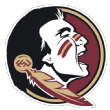 33. Brian Burns, OLB, Florida State, 6-4¾, 249 (4.53)
33. Brian Burns, OLB, Florida State, 6-4¾, 249 (4.53)
Burns has the traits of quality pass-rusher, especially his first step and overall quickness, but he will have a difficult time against NFL tackles if he can’t find play with more power or counter when the tackle takes away the corner. He might be better suited as a multitasking linebacker.
 34. Marquise Brown, WR, Oklahoma, 5-9⅜, 166 (DNR)
34. Marquise Brown, WR, Oklahoma, 5-9⅜, 166 (DNR)
Brown is one of the smallest players in the draft, and he’s coming off foot surgery. But he led the major programs with 14 receptions of at least 50 yards over the past two seasons. He might struggle at times when a cornerback gets his hands on him. But if his medical exams check out, he’s a refined route runner who battles for the ball.
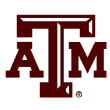 35. Erik McCoy, C, Texas A&M, 6-3⅞, 303 (4.89)
35. Erik McCoy, C, Texas A&M, 6-3⅞, 303 (4.89)
Teams got to look at him against this draft’s best — Williams and Lawrence in particular — and he can also play guard. In 38 starts, he showed great awareness and quality movement skills, and when he had to dig in against one of the big guys, he did it with consistency.
 36. Parris Campbell, WR, Ohio State, 5-11⅞, 205 (4.31)
36. Parris Campbell, WR, Ohio State, 5-11⅞, 205 (4.31)
The Buckeyes used Campbell as a wide receiver, H-back (9.1 yards per carry) and kick returner. He offers a variety of skills with elite speed. Campbell needs to smooth out the edges on routes lined up to the outside — he’s better in the slot right now — but there’s a lot to work with here.
 37. Jerry Tillery, DT, Notre Dame, 6-6½, 295 (4.93)
37. Jerry Tillery, DT, Notre Dame, 6-6½, 295 (4.93)
Tillery arrived in South Bend as highly-regarded offensive line recruit but moved to defense as a freshman. Scouts love his potential, but he didn’t play to that potential often enough. Early in his career he had some on-field composure issues, so he’ll need to convince people he can accept coaching.
 38. Dalton Risner, T, Kansas State, 6-4¾, 312 pounds (5.30)
38. Dalton Risner, T, Kansas State, 6-4¾, 312 pounds (5.30)
Risner started full seasons at center and right tackle and served as a backup center for the Wildcats. He had shoulder surgery before his senior season but showed no ill effects in 12 starts. He’s phenomenally consistent, well-schooled and his hand work is already NFL worthy.
 39. N’Keal Harry, WR, Arizona State, 6-2⅜, 228 (4.53)
39. N’Keal Harry, WR, Arizona State, 6-2⅜, 228 (4.53)
The critics say Harry “doesn’t always get separation,” which is true, but it’s also true for most receivers from time to time. Harry competes for the ball, knows how to shield defenders and runs quality routes.
 40. Julian Love, CB, Notre Dame, 5-10¾, 195 (4.54)
40. Julian Love, CB, Notre Dame, 5-10¾, 195 (4.54)
Love ran an improved 4.45 (hand-timed) 40 at his pro day. His play speed is more than good enough given his instincts, toughness, ball skills and comfort level in both zone and man-to-man looks. He should be able to play outside and in the slot. Love set the school record with 44 career pass breakups — 40 in past two seasons.
 41. Chris Lindstrom, G, Boston College, 6-3¾, 308 (4.91)
41. Chris Lindstrom, G, Boston College, 6-3¾, 308 (4.91)
Started nine games as a true freshman with 45 starts overall in his career — at right guard and right tackle. He’s a top-tier athlete in the interior of the offensive line. Some scouts believe he could play center, especially in a movement-heavy zone scheme.
 42. L.J. Collier, DE, TCU, 6-2¼, 283 pounds (4.91)
42. L.J. Collier, DE, TCU, 6-2¼, 283 pounds (4.91)
There are times when one-year starters are difficult to project. Collier didn’t start his first three seasons. His ability to flourish will depend on improving his first step, but this is a tough player who knows how to set the edge and go to work.
 43. Chauncey Gardner-Johnson, S, Florida, 5-10⅞, 210 (4.48)
43. Chauncey Gardner-Johnson, S, Florida, 5-10⅞, 210 (4.48)
Gardner-Johnson started on special teams and grew into a versatile option in coverage who can play deep safety or in the slot. He does need refinement in his footwork, especially in zone work, but Gardner-Johnson is a top-shelf athlete and quality tackler in the run game.
 44. Jaylon Ferguson, DE/OLB, Louisiana Tech, 6-4¾, 271 (4.81 PD)
44. Jaylon Ferguson, DE/OLB, Louisiana Tech, 6-4¾, 271 (4.81 PD)
Ferguson had his combine invitation rescinded due to an arrest for a fight at a McDonald’s in 2015 — he was eventually given a deferred judgement on a simple battery charge and a $189 fine. He set an NCAA record for career sacks (45, including 17.5 last season). Overall, 66.5 of 187 career tackles resulted in lost yardage.
 45. Daniel Jones, QB, Duke, 6-5⅛, 221 (4.81)
45. Daniel Jones, QB, Duke, 6-5⅛, 221 (4.81)
Jones is a three-year starter who has been well-schooled by Duke coach David Cutcliffe (whom Peyton and Eli Manning have repeatedly touted as a quarterbacks coach). Jones works progressions better than most in this quarterbacks class and might have had more passes dropped than any passer on the board. He will have to dial back some of the risky throws.
 46. Kaleb McGary, OT, Washington, 6-7⅛, 317 (5.05)
46. Kaleb McGary, OT, Washington, 6-7⅛, 317 (5.05)
Some see a future at guard for McGary, a former high school tight end. He was diagnosed with a heart arrhythmia early in his college career but had it corrected and went on start 47 games for the Huskies. He participated fully after medical exams at the combine. He’s a brute-force player with a bright future.
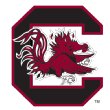 47. Deebo Samuel, WR, South Carolina, 5-11¼, 214 (4.48)
47. Deebo Samuel, WR, South Carolina, 5-11¼, 214 (4.48)
It might sound odd, but Samuel’s ability to produce in the NFL might be rooted in what kind of flexibility training he adds. Repeated hamstring problems are cause for pause, even for this kind of versatile athlete. He can play receiver, runner and kick and punt returner.
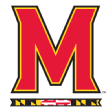 48. Darnell Savage Jr., S, Maryland, 5-10¾, 198 (4.36)
48. Darnell Savage Jr., S, Maryland, 5-10¾, 198 (4.36)
A decade ago, folks would have quibbled about Savage’s size and perhaps some will. But he has the top-tier speed, awareness, coverage skills and quick-twitch agility to be a safety in today’s game.
 49. D’Andre Walker, OLB, Georgia, 6-2⅜, 251 (DNR)
49. D’Andre Walker, OLB, Georgia, 6-2⅜, 251 (DNR)
Walker had sports hernia surgery in January, but take a look at his work against Alabama this past season for a glimpse at what he can do. He had a sack, two tackles for loss, a forced fumble and a pass breakup in less than three quarters worth of work against the Crimson Tide.
 50. Dre’Mont Jones, DT, Ohio State, 6-2¾, 281 (5.12)
50. Dre’Mont Jones, DT, Ohio State, 6-2¾, 281 (5.12)
Jones has the first step and ability to get through the gaps defensive line coaches love. The big question is if his 2018 production — 13 tackles for loss were more than 2016 and 2017 combined — is a sign of things to come. He also needs to develop some counter moves.
 51. Jeffery Simmons, DT, Mississippi State, 6-2¾, 300 (DNR)
51. Jeffery Simmons, DT, Mississippi State, 6-2¾, 300 (DNR)
There is little dispute about his ability as a player — some scouts have him in their top five. But he will test teams’ due diligence and thoughts on second chances. He was arrested as a high school senior on assault charges for striking a woman after she had already fallen to the ground. It was caught on video and he was found guilty of simple assault and allowed to enroll at Mississippi State. He has had no reported off-the-field issues in his time at Mississippi State and his coaches have supported him to NFL personnel. He also injured his knee (ACL) in pre-combine training.
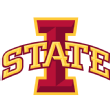 52. David Montgomery, RB, Iowa State, 5-10⅛, 222 (4.63)
52. David Montgomery, RB, Iowa State, 5-10⅛, 222 (4.63)
There are running backs coaches in the NFL who are adamant Montgomery’s vision, patience, toughness and receiving ability make him the best at his position in the draft. He has had plenty of work in three seasons at Iowa State, with 695 career touches on offense, including 71 career receptions.
 53. Deionte Thompson, S, Alabama, 6-1, 195 (DNR)
53. Deionte Thompson, S, Alabama, 6-1, 195 (DNR)
Thompson had wrist surgery just before the scouting combine in February so he did not participate in Indy or at Alabama’s pro day. He’s another in the wave of sub-200 pound safeties who have skills in coverage and a willingness to get involved in run defense.
 54. Juan Thornhill, CB/S, Virginia, 6-0¼, 205 (4.42)
54. Juan Thornhill, CB/S, Virginia, 6-0¼, 205 (4.42)
Thornhill, who was a high school quarterback, led the Cavaliers in tackles with 98 to go with six interceptions last season. Sometimes his tackles are more collision than form, but he can defend the slot or down the field.
 55. Tytus Howard, OT, Alabama State, 6-5, 322 (5.05)
55. Tytus Howard, OT, Alabama State, 6-5, 322 (5.05)
Howard might be the frequent-flyer winner on the board with 24 team visits scheduled. Certainly his level of competition is something for scouts to consider, although his work against Auburn earned him plenty of credit. The former tight end is a rare athlete with loads of potential.
 56. Riley Ridley, WR, Georgia, 6-1¼, 199 (4.58)
56. Riley Ridley, WR, Georgia, 6-1¼, 199 (4.58)
Ridley wins contested catches, which should make his transition to the NFL smoother. He had limited work in the Bulldogs’ run-heavy offense — 12, 14 and 43 catches, respectively, in his three seasons — but he runs quality routes and should develop quickly.
 57. Justin Layne, CB, Michigan State, 6-1¾, 192 (4.50)
57. Justin Layne, CB, Michigan State, 6-1¾, 192 (4.50)
A former wide receiver recruit, Layne did pull some two-way duty with the Spartans and is a work in progress in some ways. But he knows routes and plays the ball well, breaking up 15 passes last season.
 58. Trayvon Mullen, CB, Clemson, 6-1½, 199 pounds (4.46)
58. Trayvon Mullen, CB, Clemson, 6-1½, 199 pounds (4.46)
Want to track the risers on the draft weekend? Always keep an eye on the big corners with the long reach and elite speed. Mullen needs technique work, but he has exactly the skill set and upside to be a quality second-day pick.
 59. Greg Little, OT, Mississippi, 6-5¼, 310 (5.33)
59. Greg Little, OT, Mississippi, 6-5¼, 310 (5.33)
Little was a high school teammate of Murray’s and has the physical attributes of a left tackle. Some scouts don’t think he finishes his blocks, and he gets caught leaning at times, but he moves too well and could be selected far ahead of this spot.
 60. Miles Sanders, RB, Penn State, 5-10⅝, 211 (4.49)
60. Miles Sanders, RB, Penn State, 5-10⅝, 211 (4.49)
Sanders is just getting started with 220 of his 276 career carries coming last season, the first he wasn’t waiting behind Saquon Barkley. He needs work in pass protection, but he’ll contribute as a runner and receiver.
 61. Mack Wilson, LB, Alabama, 6-1⅛, 240 (4.65)
61. Mack Wilson, LB, Alabama, 6-1⅛, 240 (4.65)
Wilson is considered a “big” inside linebacker prospect who can fit in the run game and work in coverage. His work against Georgia in the 2018 national title game — 12 tackles, two tackles for loss — was some of his best.
 62. Elgton Jenkins, C, Mississippi State, 6-4½, 310 (5.14)
62. Elgton Jenkins, C, Mississippi State, 6-4½, 310 (5.14)
Jenkins had starts at right tackle, left guard, left tackle and center so scouts worked him at tackle, guard and center during his pro day. Center might be his best position, but that’s eye-catching versatility in a conference filled with defensive talent.
 63. David Long, CB, Michigan, 5-10⅝, 196 (4.45)
63. David Long, CB, Michigan, 5-10⅝, 196 (4.45)
Some teams won’t have him ranked as highly as others, but this is a press-man cornerback ready for the NFL. He plays with competitiveness and confidence and is already good at the part of the game most defensive backs coaches want prospects to play.
 64. Damien Harris, RB, Alabama, 5-10⅛, 216 (4.57)
64. Damien Harris, RB, Alabama, 5-10⅛, 216 (4.57)
Harris is substance over style. If you want a player who will lead, create positive yardage, catch the ball, sweats the details and finishes his runs with pop, this is your guy. Oh, and he has 6.4 yards per carry average in his career.
 65. Zach Allen, DE, Boston College, 6-4⅛, 281 (5.00)
65. Zach Allen, DE, Boston College, 6-4⅛, 281 (5.00)
Allen should play immediately on run downs and has the kind of high-energy, high-effort game video that gets players noticed. He had a 100-tackle season as a junior, a double-take total for a defensive lineman, and blocked two kicks this past season.
 66. Joejuan Williams, CB, Vanderbilt, 6-3⅝, 211 (4.64)
66. Joejuan Williams, CB, Vanderbilt, 6-3⅝, 211 (4.64)
Opinions vary on what kind of role Williams can carve out, and there are some who are concerned he won’t hold up down the field because of his top-end speed. He was timed at 4.59 at his pro day and has been tested against the nation’s best. Williams plays the ball well, tackles and bounces back from mistakes.
 67. Chase Winovich, DE/OLB, Michigan, 6-2¾, 256 (4.59)
67. Chase Winovich, DE/OLB, Michigan, 6-2¾, 256 (4.59)
Winovich is the picture next to relentless in this year’s draft’s dictionary. He finished his career with 44.5 tackles for loss and often played his best in the biggest moments.
 68. Max Scharping, T, Northern Illinois, 6-5⅞, 327 (DNR)
68. Max Scharping, T, Northern Illinois, 6-5⅞, 327 (DNR)
The Green Bay, Wisconsin, native didn’t run at the combine because of a hamstring injury and isn’t considered the most athletic prospect at the position. But it might be best not to overthink this one, competition or not, as Scharping surrendered one sack in the past three years.
 69. Emanuel Hall, WR, Missouri, 6-1⅞, 201 (4.39)
69. Emanuel Hall, WR, Missouri, 6-1⅞, 201 (4.39)
Hall’s standing on most draft boards will be tied to injuries. He missed time because of a hamstring injury in 2017 and groin injury in 2018. But his athleticism is rare (AAU Junior Olympic gold medals in pentathlon and high jump) with a 20.8 yards per catch career average.
 70. Lonnie Johnson Jr., CB, Kentucky, 6-1⅞, 213 (4.52)
70. Lonnie Johnson Jr., CB, Kentucky, 6-1⅞, 213 (4.52)
A player with this kind of size and speed should probably be higher, but the concern is Johnson’s one interception in the past two seasons combined. The game video leaves you wanting to see more.
 71. Kahale Warring, TE, San Diego State, 6-5⅛, 252 (4.67)
71. Kahale Warring, TE, San Diego State, 6-5⅛, 252 (4.67)
An all-potential prospect whose athletic background includes swimming, water polo, basketball and soccer. Warring played one season of high school football and is a work in progress who shows tenacity as a blocker to go with quality work as a receiver.
 72. Amani Hooker, S, Iowa, 5-11⅜, 210 (4.48)
72. Amani Hooker, S, Iowa, 5-11⅜, 210 (4.48)
A good scheme fit is always important for any prospect, but a little more for Hooker. He plays with great awareness and understands what the offense is trying to do. The team that uses that best will get a future starter.
 73. Connor McGovern, C/G, Penn State, 6-5⅜, 308 (DNR)
73. Connor McGovern, C/G, Penn State, 6-5⅜, 308 (DNR)
McGovern started games at guard and center for the Nittany Lions and told teams he could play tackle if needed. He projects to have a comfort level in gap and zone run schemes, even though his work in pass protection needs immediate attention.
 74. Trysten Hill, DT, Central Florida, 6-2¾, 308 (5.04)
74. Trysten Hill, DT, Central Florida, 6-2¾, 308 (5.04)
A phenomenal athlete who carries some maturity questions — it has been noted, for example, he only acknowledged former Knights coach Scott Frost and staff in his announcement to go to the NFL and not the current UCF coaching staff. He did start 26 games in the previous two seasons and only one last year.
 75. Anthony Nelson, DE, Iowa, 6-7, 271 (4.82)
75. Anthony Nelson, DE, Iowa, 6-7, 271 (4.82)
A power player who projects to improve as a pro, especially if he learns to work inside once he has the blocker on his heels. A better fit for a 4-3 team, but there is a lot to work with as he had 23 tackles for loss over the past two seasons.
 76. Sean Bunting, CB, Central Michigan, 6-0⅜, 195 (4.42)
76. Sean Bunting, CB, Central Michigan, 6-0⅜, 195 (4.42)
Watch him shadow a receiver out of the break and you see Bunting’s potential. He hasn’t had to be all that physical with most of the receivers he has covered and that will be an adjustment for him as an NFL corner.
 77. Nate Davis, OG, North Carolina-Charlotte, 6-3¼, 316 (5.23)
77. Nate Davis, OG, North Carolina-Charlotte, 6-3¼, 316 (5.23)
Davis was suspended for the first four games of the season for violating NCAA regulations, but he’s a tough, physical guard (played at right tackle in 2018) who has high-quality movement skills.
 78. JJ Arcega-Whiteside, WR, Stanford, 6-2, 225 (4.49 PD)
78. JJ Arcega-Whiteside, WR, Stanford, 6-2, 225 (4.49 PD)
Both of his parents were professional basketball players and Arcega-Whiteside shows those skills on contested catches, especially in the red zone. He knows how to shield the defender and win the ball. He averaged 16.4 yards per catch in his career.
 79. Darrell Henderson, RB, Memphis, 5-8⅜, 208 (4.53)
79. Darrell Henderson, RB, Memphis, 5-8⅜, 208 (4.53)
Henderson averaged 8.9 yards per carry last season against largely overmatched defenses — 1,909 yards on 214 carries. He’s not going to break many tackles, but he does plenty before the hit. Henderson had five games with at least one run of 50 or more yards and two games with a reception of at least 50 yards.
 80. Jachai Polite, OLB, Florida, 6-2⅝, 258 (4.84)
80. Jachai Polite, OLB, Florida, 6-2⅝, 258 (4.84)
Polite is a 258-pound question mark. On one hand, you have the player who had 17.5 tackles for loss and 11 sacks in the SEC last season. On the other, you have the player who cratered at the scouting combine. The combine performance was as difficult to explain as his rush skills are to ignore.
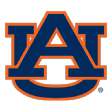 81. Jamel Dean, CB, Auburn, 6-1, 206 (4.30)
81. Jamel Dean, CB, Auburn, 6-1, 206 (4.30)
Teams took a hard look at Dean’s medical history given his knee injuries in high school and his first year at Auburn. He started 22 of Auburn’s 26 games over the past two seasons. He’s also one of the fastest players in the draft.
 82. Dawson Knox, TE, Mississippi, 6-4⅜, 254 (4.57 PD)
82. Dawson Knox, TE, Mississippi, 6-4⅜, 254 (4.57 PD)
Yes, Knox is receiving tight end who finished with 39 career receptions and no touchdowns. Metcalf and Brown were the main targets in the offense, but Knox still averaged 18.9 yards per catch in 2018. He also blocks with a noticeable edge.
 83. Kelvin Harmon, WR, North Carolina State, 6-3½, 221 (4.60)
83. Kelvin Harmon, WR, North Carolina State, 6-3½, 221 (4.60)
Harmon is a technically-sound player who has an understanding of the finer points of the position. He gets open against faster players and is aggressive to the ball with back-to-back 1,000-yard seasons.
 84. Oshane Ximines, OLB/DE, Old Dominion, 6-3½, 253 (4.78)
84. Oshane Ximines, OLB/DE, Old Dominion, 6-3½, 253 (4.78)
Ximines is a refined rusher (20.5 sacks the past two seasons), countering a tackle’s first contact and adjusting. He doesn’t have the “wow” athleticism of some edge rushers on the board, but he should contribute immediately.
 85. Ryan Finley, QB, North Carolina State, 6-4, 213 (4.74)
85. Ryan Finley, QB, North Carolina State, 6-4, 213 (4.74)
After transferring from Boise State, Finley improved his accuracy and passing yardage in each of his three seasons at NC State. He’s a by-the-numbers player who will put the ball where it is supposed to go, but he needs to improve in the red zone.
 86. Kendall Sheffield, CB, Ohio State, 5-11⅜, 193 (DNR)
86. Kendall Sheffield, CB, Ohio State, 5-11⅜, 193 (DNR)
Sheffield is a potential-over-production player and there’s some concern he’s more speed than substance. His speed is elite — he set the Ohio State record for the 60-yard dash (6.663 seconds) — and he showed far more consistent work in coverage last season. He is recovering from torn pectoral muscle suffered at the combine.
 87. Jace Sternberger, TE, Texas A&M, 6-4, 251 (4.75)
87. Jace Sternberger, TE, Texas A&M, 6-4, 251 (4.75)
He’s not the blocker most want at the position, but his potential in the passing game outweighs that. Sternberger is a quality yards-after-the-catch player, who averaged 17.3 yards per reception last season.
 88. Renell Wren, DT, Arizona State, 6-4⅞, 318 (5.01)
88. Renell Wren, DT, Arizona State, 6-4⅞, 318 (5.01)
Wren, who played in 42 games, seemed miscast at nose tackle and is rough around the edges in his technique. He will be a prospect for a team with a defensive line coach who realizes potential.
 89. Dru Samia, G, Oklahoma, 6-4¾, 305 (5.29)
89. Dru Samia, G, Oklahoma, 6-4¾, 305 (5.29)
Samia was a right tackle early in his career at Oklahoma before he was moved to right guard. He’s a nimble player who finishes blocks with zeal.
 90. Germaine Pratt, LB, North Carolina State, 6-2½, 240 (4.57)
90. Germaine Pratt, LB, North Carolina State, 6-2½, 240 (4.57)
Pratt played safety for two seasons before taking a redshirt after shoulder surgery in 2016. He has plenty of coverage skills for someone still learning to play linebacker, but he showed potential with a 104 tackles last season.
 91. Joe Jackson, DE, Miami, 6-4¼, 275 (DNR)
91. Joe Jackson, DE, Miami, 6-4¼, 275 (DNR)
Jackson might be a better fit for teams looking for a 4-3 defensive end, but he plays with raw power and high effort with the potential to do more in the pass rush. He finished with nine sacks and 14.5 tackles for loss this past season.
 92. Miles Boykin, WR, Notre Dame, 6-3¾, 220 (4.42)
92. Miles Boykin, WR, Notre Dame, 6-3¾, 220 (4.42)
Boykin should dominate on every snap but didn’t for the Irish. He has a ton of potential if he can match his work in his routes to his ability once the ball is in the air.
 93. Jahlani Tavai, LB, Hawaii, 6-2⅜, 250 (DNR)
93. Jahlani Tavai, LB, Hawaii, 6-2⅜, 250 (DNR)
Tavai missed the last six games of 2018 because of a shoulder injury. He’s one of the most productive players at the position, averaging 8.3 tackles per game over four years despite Hawaii’s cavalcade of defensive coordinators.
 94. Amani Oruwariye, CB, Penn State, 6-1⅝, 205 (4.45)
94. Amani Oruwariye, CB, Penn State, 6-1⅝, 205 (4.45)
Many NFL defensive backs coaches believe Oruwariye will flourish in a zone-heavy scheme. He’s a physical cornerback who knows how to disrupt routes and plays with awareness. Game video showed a player who sees the double moves about to happen.
 95. Mecole Hardman, WR, Georgia, 5-10¼, 187 (4.33)
95. Mecole Hardman, WR, Georgia, 5-10¼, 187 (4.33)
Hardman arrived as a cornerback — after being Georgia’s high school player of the year as a quarterback — so he has played receiver for two seasons. He has elite speed, could be a top-end returner (averaged 20.1 yards per punt return) and will give an offense big-play pop.
 96. Marquise Blair, S, Utah, 6-1¼, 195 (4.48)
96. Marquise Blair, S, Utah, 6-1¼, 195 (4.48)
Blair might be rated higher here than others have him, but he is active at the point of attack, a willing tackler and has the length to play in coverage. He took a few too many penalties and had knee injuries in high school and in 2017 at Utah.
 97. Chuma Edoga, OT, USC, 6-3½, 308 (5.19)
97. Chuma Edoga, OT, USC, 6-3½, 308 (5.19)
Edgoga ran the 100 meters for his high school’s track team. He missed time in two seasons because of injuries (wrist, ankle) but made starts at left and right tackle for the Trojans. He needs work, but he’s a quality athlete.
 98. Andy Isabella, WR, Massachusetts, 5-8¾, 188 (4.35)
98. Andy Isabella, WR, Massachusetts, 5-8¾, 188 (4.35)
Isabella is an outlier in a receiver class that features plenty of giants. But there isn’t an offense in the league that wouldn’t want a slot receiver like him (102 catches in 2018). He also returns punts.
 99. Christian Miller, OLB/DE, Alabama, 6-3⅜, 247 (DNR)
99. Christian Miller, OLB/DE, Alabama, 6-3⅜, 247 (DNR)
Miller had some injuries (biceps, hamstring) and has been a rotational player for the Tide with four starts in 2018. There’s a pass-rusher waiting to be unlocked here.
 100. Tyree Jackson, QB, Buffalo, 6-7, 249 (4.59)
100. Tyree Jackson, QB, Buffalo, 6-7, 249 (4.59)
Through the years, No. 100 has always been a player I like for whatever reason. They might or might not really be the 100th player on the board, but I put them here because I believe they will succeed. Past No. 100s have included wide receiver Brandon Marshall, Miami Dolphins defensive tackle Akeem Spence and Seattle Seahawks linebacker Shaquem Griffin. Yes, Jackson has to find a way to regulate a power arm, but he does well going through his progressions, looks off safeties, can make off-balance throws, has mobility and can make plays off schedule.
Close, but not quite: Will Grier, QB, West Virginia; Trayveon Williams, RB, Texas A&M; Hakeem Butler, WR, Iowa State; Michael Jordan, G, Ohio State; David Edwards, T, Wisconsin; Ben Banogu, OLB/DE, TCU; Gerald Willis III, DT, Miami; Maxx Crosby, DE, Eastern Michigan.
